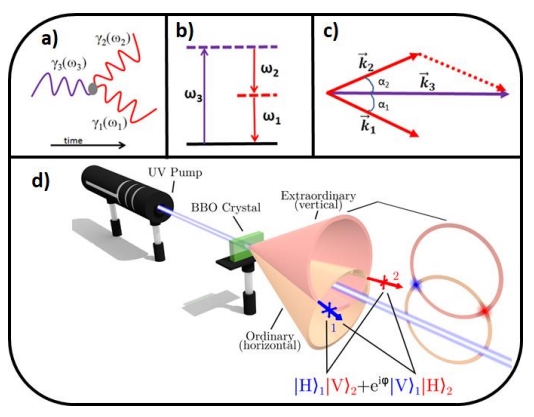BBO Crystals Supporting the Research of Quantum Entanglements
Introduction
In the ever-evolving realm of quantum physics, the exploration of quantum entanglements has become a focal point of research, promising groundbreaking advancements in communication and computation technologies. This article delves into the intricacies of quantum entanglements, the application of Bell inequalities, and the crucial role played by Beta Barium Borate (BBO) crystals in the phenomenon of Spontaneous Parametric Down-Conversion (SPDC).
Quantum Entanglements and Bell Inequalities
Quantum Entanglements, a phenomenon famously described by Albert Einstein as "spooky action at a distance," occurs when two or more particles become correlated in such a way that the state of one particle instantaneously influences the state of the other, regardless of the distance separating them. Bell Inequalities, introduced by physicist John Bell in the 1960s, provide a means of testing the non-local correlations predicted by quantum mechanics. These inequalities serve as a litmus test for the validity of quantum entanglement, challenging our classical understanding of physics.
Spontaneous Parametric Down-Conversion
At the heart of many experiments exploring quantum entanglements lies the process of Spontaneous Parametric Down-Conversion (SPDC). SPDC involves the interaction of a photon with a nonlinear crystal, resulting in the creation of two entangled photons. The entangled photons exhibit a correlation in their polarization states, providing a tangible manifestation of quantum entanglement. This process has become a cornerstone in the development of quantum technologies, including quantum key distribution and quantum teleportation.
Type I Phase Matching
To achieve efficient SPDC, phase matching is crucial. In Type I phase matching, the polarizations of the input and output photons are parallel. This condition ensures that the energy and momentum are conserved during the down-conversion process. Achieving Type I phase matching is vital for the production of entangled photon pairs with well-defined polarization properties.
Type II Phase Matching
In contrast, Type II phase matching involves the generation of entangled photon pairs with perpendicular polarizations. This configuration offers unique advantages in certain quantum experiments and applications. By carefully manipulating the properties of the nonlinear crystal, researchers can tailor the entanglement properties of the generated photon pairs, enabling a higher degree of control over quantum states.
BBO Crystal for SPDC
One of the most widely used nonlinear crystals for SPDC experiments is Beta Barium Borate (BBO). BBO crystals possess favorable properties, such as a high nonlinear coefficient, wide transparency range, and excellent optical damage threshold. These characteristics make BBO crystals ideal for efficiently converting a single photon into a pair of entangled photons. Researchers leverage the unique qualities of BBO crystals to push the boundaries of quantum entanglement studies, paving the way for practical applications in quantum information processing.

Figure 1: a) Feynman’s diagram of SPDC where one photon at energy ℏ
Tags: BBO Crystals supporting the research of quantum entanglements

